24 Apr Multiplexing in Computer Networks
Simultaneous transmission of multiple signals across a single data link is called Multiplexing in Computer Networks. Let us first see why we should go for Multiplexing and what benefits does it offer.
Why Multiplexing?
For understanding the importance of Multiplexing, first let us see transmission without multiplexing,
Without Multiplexing
Let us say you have linked three pair of devices, which have 3 separate links. If the full capacity of a link is not utilized, then it will be wasted as in the figure below,
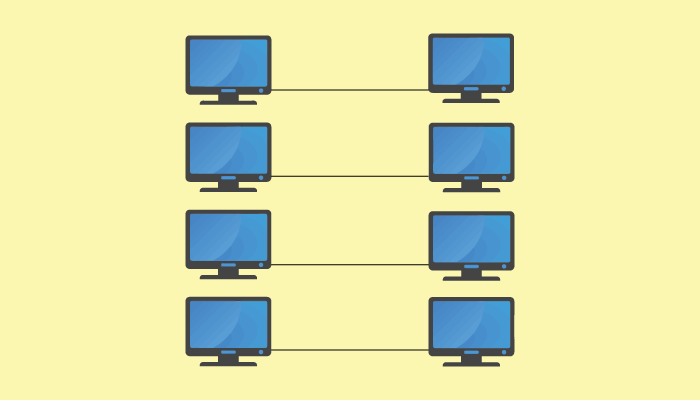
With multiplexing
Let us say you have linked 3 pair of devices, which have a single link. In this case, the pair of devices is multiplexed. The 3 pairs share the capacity of 1 link as shown in the figure below,
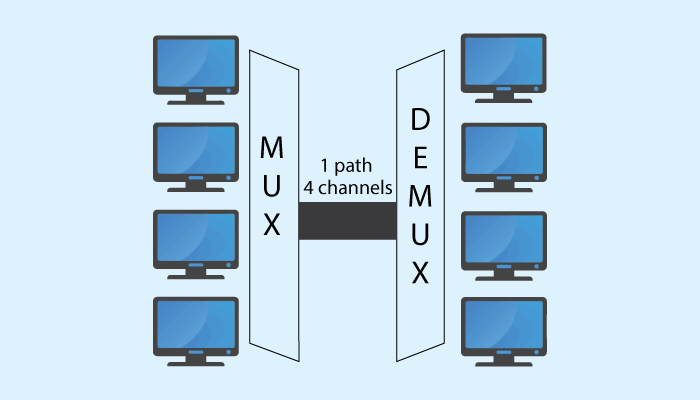
The above figure shows two concepts i.e. the difference between Multiplexer and Demultiplexer,
Multiplexer
On the left, you can see three devices, which direct their stream to a MUX (Multiplexer). This combines into a single stream i.e. many to one.
Demultiplexer
However, on the other end, the stream is fed into a DEMUX (Demultiplexer). This separates the stream back into their receiving devices i.e. one to many.
Here are the types of Multiplexing,
- Frequency Division Multiplexing
- Time Division Multiplexing
- Wave Division Multiplexing
Let use discuss them one by one,
Frequency Division Multiplexing
The signal generated by each sending device modulates distinct carrier frequencies. Modulated signals are combined into a lone composite signal transported by the link.
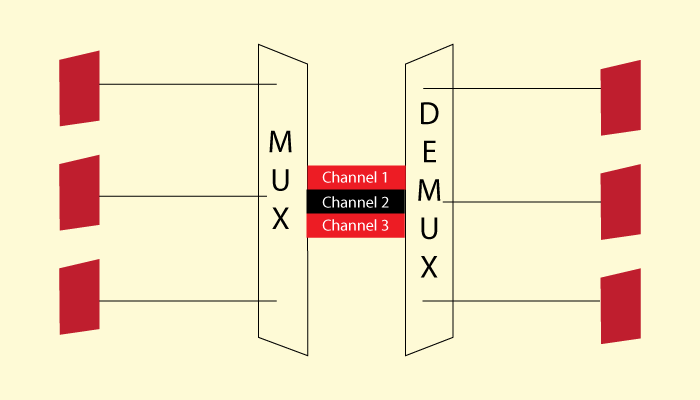
Time Division Multiplexing
When the data rate capacity of transmission medium is greater than data rate required by devices (sending & receiving), the Time Division Multiplexing (TDM) is applied.
Synchronous Time Division Multiplexing
Multiplexer allocates the same time slot to each device at all times.
Asynchronous Time Division Multiplexing
The Asynchronous TDM introduced to avoid the wear and tear done by synchronous time division multiplexing.
Wave Division Multiplexing
The Multiplexer and Demultiplexer in Wave Division Multiplexing has light signals transmitted through fiber optic channels.
For light sources, a prism is used.
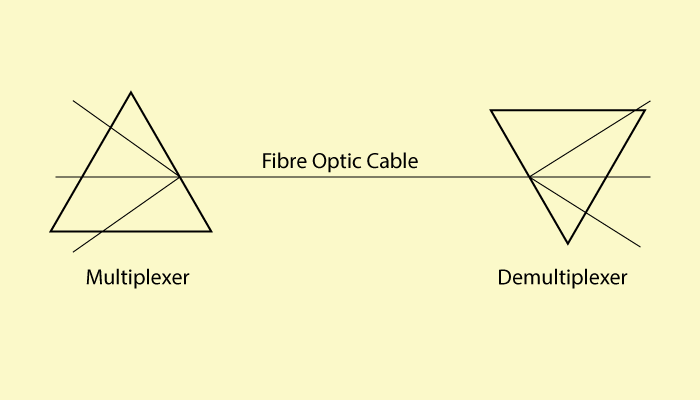
If you liked the tutorial, spread the word and share the link and our website Studyopedia with others.
For Videos, Join Our YouTube Channel: Join Now


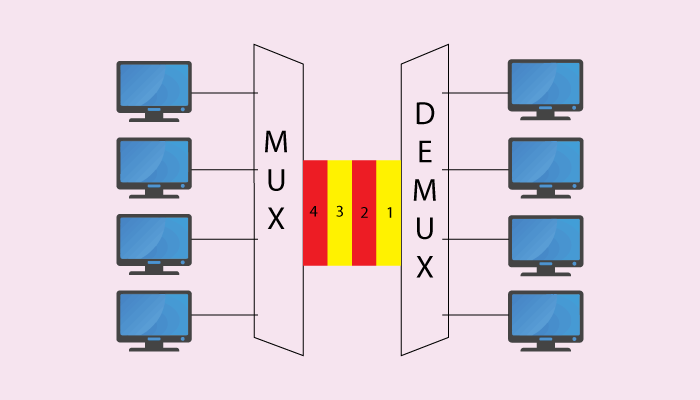
No Comments